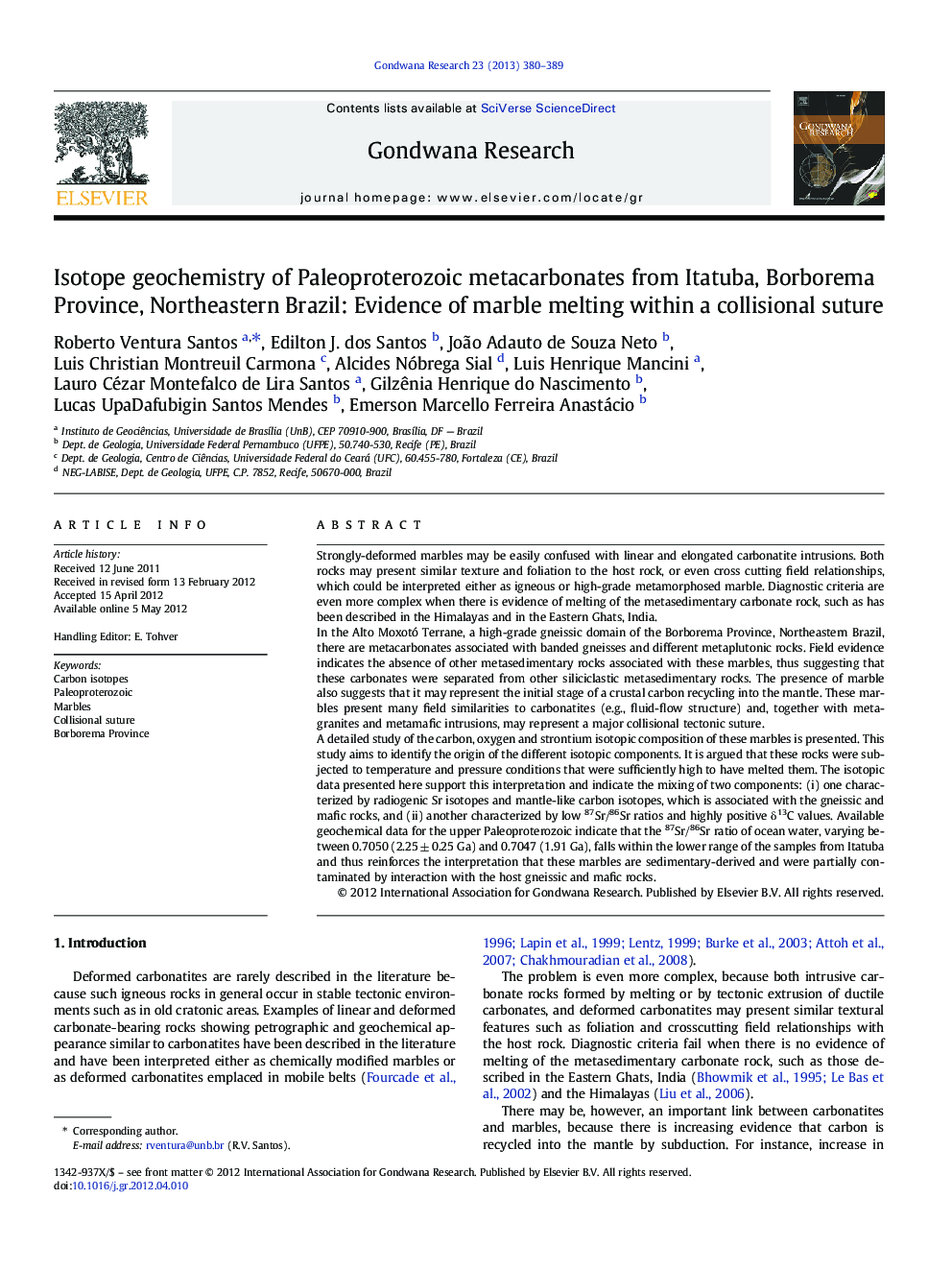| Article ID | Journal | Published Year | Pages | File Type |
|---|---|---|---|---|
| 4727552 | Gondwana Research | 2013 | 10 Pages |
Strongly-deformed marbles may be easily confused with linear and elongated carbonatite intrusions. Both rocks may present similar texture and foliation to the host rock, or even cross cutting field relationships, which could be interpreted either as igneous or high-grade metamorphosed marble. Diagnostic criteria are even more complex when there is evidence of melting of the metasedimentary carbonate rock, such as has been described in the Himalayas and in the Eastern Ghats, India.In the Alto Moxotó Terrane, a high-grade gneissic domain of the Borborema Province, Northeastern Brazil, there are metacarbonates associated with banded gneisses and different metaplutonic rocks. Field evidence indicates the absence of other metasedimentary rocks associated with these marbles, thus suggesting that these carbonates were separated from other siliciclastic metasedimentary rocks. The presence of marble also suggests that it may represent the initial stage of a crustal carbon recycling into the mantle. These marbles present many field similarities to carbonatites (e.g., fluid-flow structure) and, together with metagranites and metamafic intrusions, may represent a major collisional tectonic suture.A detailed study of the carbon, oxygen and strontium isotopic composition of these marbles is presented. This study aims to identify the origin of the different isotopic components. It is argued that these rocks were subjected to temperature and pressure conditions that were sufficiently high to have melted them. The isotopic data presented here support this interpretation and indicate the mixing of two components: (i) one characterized by radiogenic Sr isotopes and mantle-like carbon isotopes, which is associated with the gneissic and mafic rocks, and (ii) another characterized by low 87Sr/86Sr ratios and highly positive δ13C values. Available geochemical data for the upper Paleoproterozoic indicate that the 87Sr/86Sr ratio of ocean water, varying between 0.7050 (2.25 ± 0.25 Ga) and 0.7047 (1.91 Ga), falls within the lower range of the samples from Itatuba and thus reinforces the interpretation that these marbles are sedimentary-derived and were partially contaminated by interaction with the host gneissic and mafic rocks.
Graphical abstractFigure optionsDownload full-size imageDownload as PowerPoint slideHighlights► Positive δ13C (up to 8.8‰) metacarbonate rocks associated with mafic and gneissic rocks. ► Magmatic flow structures indicate temperature and pressure conditions high enough to melt the metacarbonates. ► Molten metacarbonates are placed along a Paleoproterozoic suture zone that probably has an African counterpart.
